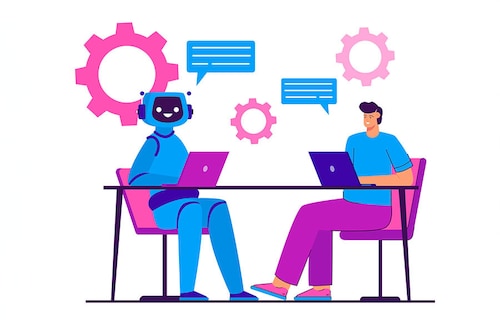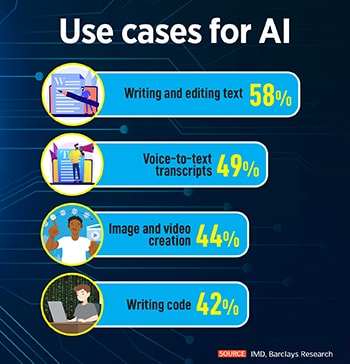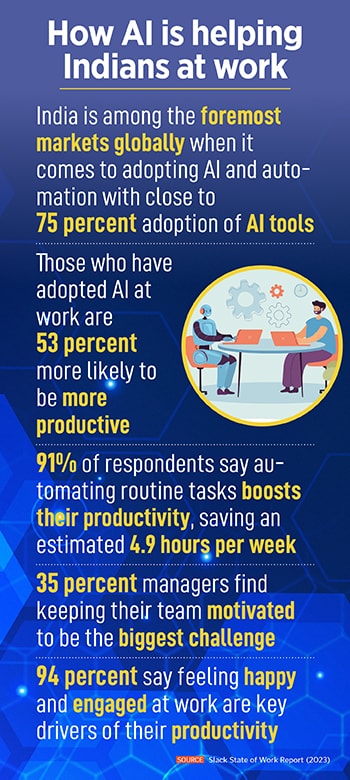75 percent Indians use AI tools to help drive productivity: Report
According to Slack's State of Work Report, with the increased usage of AI tools, Indian desk workers are saving up to 4.9 hours per week


India is among the foremost markets globally when it comes to adopting artificial intelligence (AI) and automation, with close to 75 percent adoption of AI tools to help drive productivity, according to Slack’s State of Work report. It adds that in using these tools, Indians have saved about 4.9 hours per week. Indians who have adopted AI in their work are 53 percent more likely to have significantly higher levels of productivity than those who have not. AI is a huge opportunity for India given that digital transformation spending in India is likely to touch $85 billion by 2026, claims Slack.
While there is an increased adoption of AI tools, is there a fear of job losses? Derek Laney, Slack Technology Evangelist, APAC, Salesforce, thinks not. He believes employees are seeing the benefits of using these tools. "In many cases, employees have started adopting AI tools for themselves, even before the company is ready to use them. This means that Indians are hugely enthusiastic to learn and experiment because they see the benefits," Laney adds.
 The report identifies three main trends that are driving employee productivity:
The report identifies three main trends that are driving employee productivity:
 On the other hand, productivity and employee wellbeing are not mutually exclusive. Job satisfaction, engagement, and mental wellness are also top factors that contribute to productivity, so it is crucial for leaders to consider these areas as part of how they redefine and drive productivity. The majority (94 percent) of employees in India say feeling happy and engaged at work are key drivers of productivity, states the report.
On the other hand, productivity and employee wellbeing are not mutually exclusive. Job satisfaction, engagement, and mental wellness are also top factors that contribute to productivity, so it is crucial for leaders to consider these areas as part of how they redefine and drive productivity. The majority (94 percent) of employees in India say feeling happy and engaged at work are key drivers of productivity, states the report.
“Through the strategic utilisation of intelligent tools and the optimisation of processes, we can create an environment where employees thrive and make meaningful contributions," says Laney. “By equipping managers and employees with the right tools to work more efficiently, organisations have the potential to drive productivity and unleash the true potential of desk workers in India."
Though there has clearly been an uptick in employees upskilling themselves to be at par with the industry in terms of AI, Laney believes, "The desire is not to create a world full of technologists, it is to enable us to do what we do as humans better and more efficiently." Sectors such as engineering, IT and design are seen to be using AI the most, states the report.
In an attempt to help users and enterprises improve productivity, Slack is also looking to go big in the space of AI. In May, the platform released Slack GPT in an attempt to bring generative AI onto the platform. Yet to be rolled out for customers, it will include a set of AI features built into Slack such as AI-powered conversation summaries and writing assistance. Additionally, says Laney, “We are also looking at Synthesis. This means, if you ask a question in real language, you get the answer from your own body of data. This is a much harder thing for companies to achieve."
First Published: Jul 20, 2023, 14:15
Subscribe Now